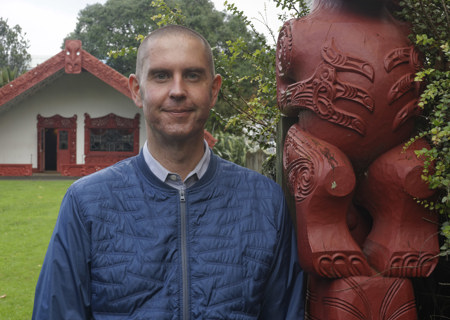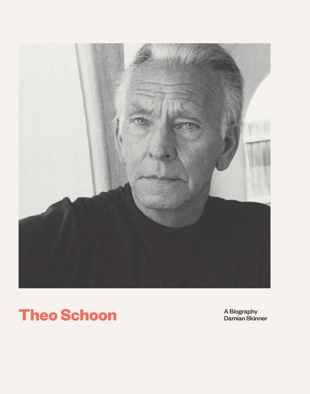1. You wrote your MA thesis on Theo Schoon in the 1990s but clearly you weren’t quite done with him. What drew you back?
It was actually meeting a collector of Schoon’s work that made me realise I wasn’t finished with him. Auckland collector Christine Fernyhough had started buying his art, and she heard about my thesis and approached me to buy a copy. I attended a dinner she hosted for people who were interested in Schoon, and it occurred to me that over the twenty years since I had finished my master’s, I’d changed my mind about a lot of things and it would be great to have a go at getting to grips with what made Schoon fascinating and important. A few months later I read an old letter I had received in the late 1990s from John Money, an old friend and patron of Schoon’s. He said my thesis was all very well, but it didn’t say anything about what made Schoon a genius. I felt ready to give that a go second time around.
2. With the current Gordon Walters show and new Michael Parekowhai sculpture at Te Papa, both examining Schoon’s work and influence, and his works often coming up at art auctions, it feels as though his moment has come. Would you agree?
He is having a moment. I think contemporary art is more interested in the kinds of things that Schoon was interested in, and as a result his work seems fresh, maybe even prescient in a way. For example, it used to be a problem that he was a painter and a photographer and a printmaker and a gourd and jade carver and a potter. Too much craft and not enough art. But now that diversity seems interesting. It used to be a problem that he didn’t care about finished artworks in favour of exploring ideas, but now that looks like ambitious experimentation.
3. Why had he faded from view?
He was a bit of a shit personally, and he didn’t make it easy for people to support him or his work. Tastes change, as do the things that the art world find important or valuable.
4. You must have known a good deal about him when you set out to write the biography, but were there things your research uncovered that surprised you?
It wasn’t so much discovering new things as realising how ignorant I was the first time around. For example, when I wrote my thesis I was most keen on his relationship to Māori art, and I thought his experiences in Indonesia at the beginning and end of his life were irrelevant. Turns out you can’t really understand anything that came later without reckoning properly with his childhood in Java; and his late in life return to Bali also matters greatly if you want to appreciate what he was trying to do as an artist. I’m sure Schoon would still be horrified by me and my work, but he might sniffily acknowledge I’d actually seen a few more things second time around.
5. It would be so easy to read his tumultuous life as tragic. Do you?
His story doesn’t end well, but he lived his life with an uncompromising belief in the rightness of pursuing art and creative expression, regardless of the effect on other people. That’s admirable, even if the results were awful, and it has a kind of twisted integrity that is something other than tragic.
6. What contribution do you hope your biography will make to the reassessment of his role in New Zealand art?
I think people will be surprised at how often Schoon pops up in important cultural moments; sometimes he is central, sometimes he’s on the edge, but he really got around. He’s a catalyst for and a participant in New Zealand art in ways that aren’t always known.
7. As you note, he fell out with just about everyone but there were so many who showed him kindness and respect. What about him commanded that?
He was very different to most New Zealand artists. I think this difference was captivating. And even if people got burned by it, his absolute willingness to do whatever it took to follow his artistic passions earned respect and a great deal of forgiveness.
8. Were he to reappear and consider the state of New Zealand art today, do you think he’d feel that some of his aspirations for the intersection of Māori art and modernism had been met?
I think if Schoon returned he would be very disappointed that his vision for the proper direction of New Zealand art hadn’t been fulfilled — and he wouldn’t waste any time letting us all know, in great detail, what had gone wrong!
9. You are a prodigious and disciplined author but even so you must feel the pressure of deadlines. What are your strategies for when the going gets tough?
I’ve developed the ability to go on holiday for a couple of hours at a time, which seems to work well. I am also a firm believer in daytime movies when the going is most tough — after all, you don’t need to skive off when you’ve actually got time to do something frivolous.
10. What are you reading at the moment?
I’m dividing my reading time between Liu Cixin’s Death’s End, which is the third novel in his sci-fi trilogy Remembrance of Earth’s Past, and Helen Leach’s Kitchens: The New Zealand Kitchen in the Twentieth Century.


